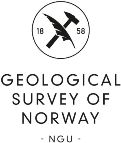

|
Norsk versjon | ||||
| THE INDUSTRIAL MINERAL DATABASE | |||||
| Deposit Area 814 - 329 | |||||
| (Last updated 08.jan.2024) | |||||
Name of Deposit Area : Synken |
| (Object Id : 0814,329,00,00) |
| Location |
| County : | Telemark (08) | Municipality : | Bamble (0814) |
| Map 1:50000: | Porsgrunn (1713-2) | Map 1:250000: | Skien |
| Marking point: | Longitude: | 9.7084850 | Latitude: | 59.0258740 |
| EU89-UTM Zone 32 | (Coordinates IS confirmed) |
| X-coord: | 540673 m. | Y-coord: | 6543148 m. |
|
|
| Commodity |
| Main Type: | Carbonates | Sub Type: | Limestone |
| Production |
| Activity: | Mining | Reserves: | ||
| Prod. method: | Open pit mining | Production: | ||
| Prod. status: | Disused, closed | Volume of dump: |
| Importance |
| Public: | Little Importance (reg. 18.02.2015) |
| Economical: | Minor interest , (Confirmed 05.sep.2001 by Havard Gautneb) |
Products |
| Element/product | Crude ore grade or quality | |
| LIME | % |
Mineralization |
| Era: | Paleozoic | Period: | ||
| Dating: | Method: | |||
| Genesis: | Form: | |||
| Main texture: | Min. distribution: |
| Main grain size: |
| Strike/Dip: | Direction: | |||
| Plunge: |
| Stratigraphic classification of host rock |
| Era: | Paleozoic | Period: | Ordovician |
| Province: | Oslo Region | |
| Geotec.unit: | ||
| Tectonic complex: | ||
| Igneous complex: |
| Group: | Formation: |
Information(s) in free text format |
| Free text |
| Nedlagt kalksteinsbrudd ved Stathelle. Forekomsten ligger i dag mindre enn 100 meter fra bebyggelsen og det går en turvei gjennom forekomsten. Det har vært drevet på Porgrunnskalkstein i en ganske tykk og massiv del. Bruddet er 200 meter langt og ca. 30 meter bredt, og er delvis vannfylt. Den synlige delen av kalken er 10 meter tykk med skifer og knollekalk over. På grunn av den store bebyggelsen i dette området er forekomstene ved Stathelle uten økonomisk interesse i dag |
Bibliography: |
| From NGU's Reference Archive: |
| Bøckman, K.L. , 1967 |
| Norges kalksteins- og kvartsforekomster. |
| ;Elektrokemisk A/S;FAGRAPPORT; UTREDNINGSRAPPORT;Bergarkivet; No.BA 5245;89 + 61 pages |
| Holtedahl, Olaf , 1912 |
| Kalkstensforekomster i Kristianiafeltet |
| ;Norges geologiske undersøkelse;TIDSSKRIFTARTIKKEL;NGU; No.63;1-69 pages |
| Abstract: | |
| Forkortet: The remarkable development in Norway of several chemico-technical branches of industry during the last twenty to thirty years has immensely increased the use of limestone. The object of the present paper is to contribute to our knowledge of the supply of native limestone. It is confined, however, to the occurrence of limestone in the "Oslo Field", indicated on the map, Fig.1, by darker tone. The occurrences in the Oslo Field are all of Ordovician or Silurian Age. As in the case of the palaeozoic sediments, here the lime- stone layers are never horizontal, but, from folding or other causes, are in- clined. The strike in the folded, northern districts is NE-SW to E-W. Descriptions of the several occurrences arranged according to districts menti- oned om pp.12,13 are to be found on pp. 13-63. As the most important occurrences of Ordovician limestone may be mentioned: The Enkrinit-limestone in the Langesund-Skien Valley district, the Gastropod-limestone in the Hadeland, the Mjøs-limestone in the "Mjøsdistrict" of Silurian: the Borealis-Pentamerus- limestone in the Hadeland, the Pentamerus-limestone in the Drammen Valley dis- trict, Bærum-Asker-Lier, Ringerike and the Mjøsdistrict, the Wenlock-limestone in the Langesund-Skien Valley district, the limestone of etage 9 d. |
| The fact sheet was created on 22.11.2024 |
| Questions or comments regarding the fact sheet can be emailed to: ressursdatabaser@ngu.no |
| Copyright © 2024 Geological Survey of Norway |